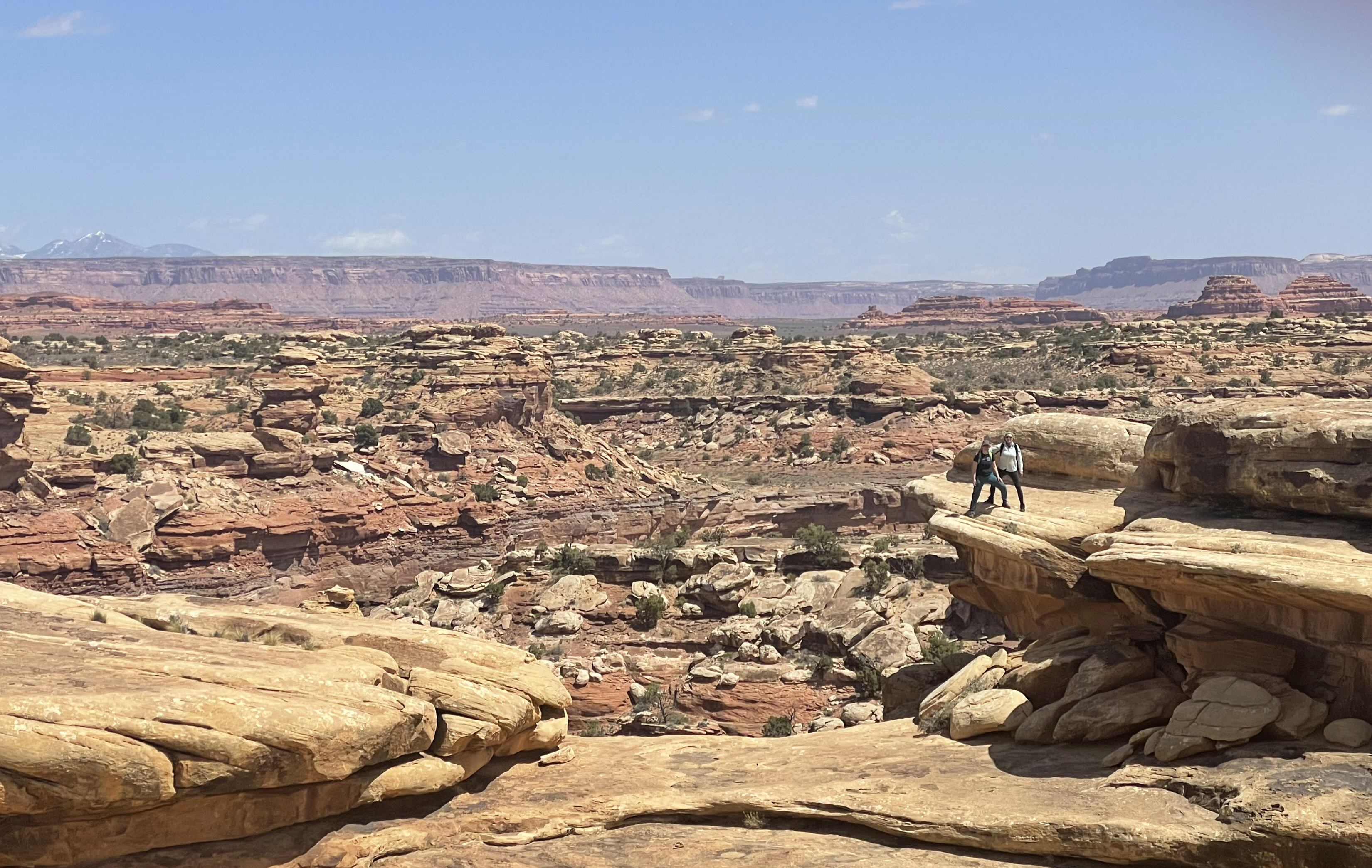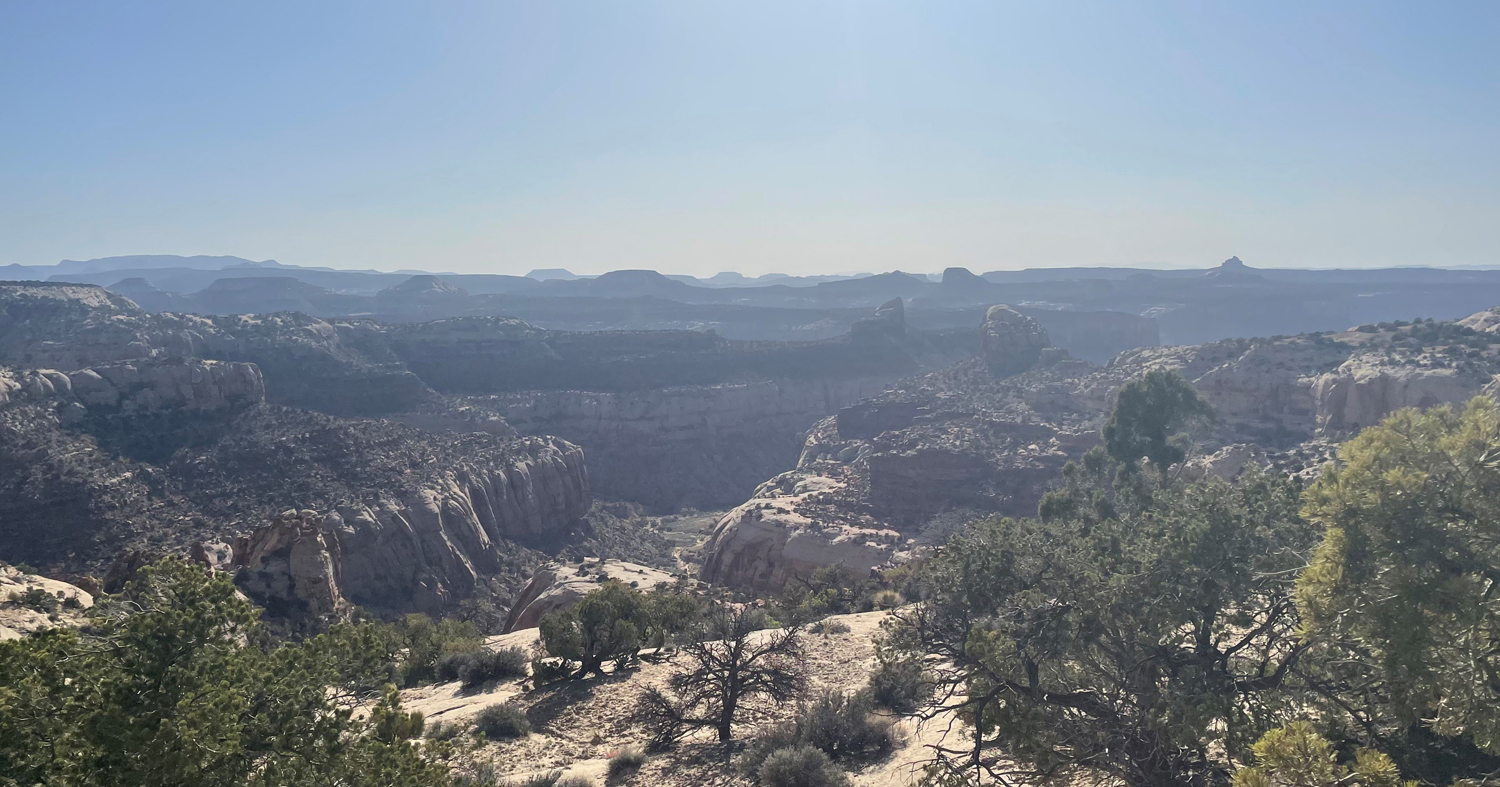Lindsay Beebe took a trip with her mom to Utah’s iconic Arches and Canyonlands National Parks this spring. The Utahn was excited to see the park’s famous views, but knew air quality would play a major role in whether she’d be able to enjoy them.
“The view of Delicate Arch framing the snow-capped peaks of the La Sal mountain range is perhaps the most iconic imagery symbolizing the state of Utah, and yet, we saw these mountains shrouded in a gray-brown veil that obscured their full dimension and dulled the preceding red rock canyons in a blurry haze,” said Beebe, a senior campaign representative for the Sierra Club’s Beyond Coal campaign.
Haze impacts 90 percent of our country’s national parks, and the same pollutants responsible for the widespread air pollution also harm our health, particularly in communities targeted by generations of systemic racism. Air pollution from burning fossil fuels and other sources worsens community health, drives up healthcare costs, and makes it harder for kids to learn and play and adults to work.
Beebe knows a major cause of the haze in Arches—Utah’s two massive coal plants, Hunter and Huntington are a significant source of haze-causing emissions. “The veil of haze is upsetting although not surprising, considering that two of Utah’s largest coal-fired power plants belch uncontrolled nitrogen oxide pollution and other harmful emissions less than 100 miles upwind,” said Beebe. She added that the Environmental Protection Agency (EPA) supports her observations: It’s determined that Hunter and Huntington contribute to noxious haze in nine nearby national park and wilderness areas.

A hazy day in Canyonlands National Park. Photo courtesy of Lindsay Beebe.
The Sierra Club and local partners have spent a decade working to ensure visitors to the state’s parks, and those who live and recreate nearby, have clean air to breathe. But now after almost two decades of Regional Haze planning, the state’s failure to get these two giant coal plants cleaned up stands in the way.
“I’ve spent considerable time reviewing the EPA’s actions to address regional haze in Utah’s national parks and wilderness areas, and I am deeply concerned with Utah’s failure to submit a federally compliant regional haze plan that addresses the state’s largest polluters,” said Beebe. “The state has had multiple chances to address uncontrolled pollution from Hunter and Huntington, two of the most park polluting sources in the entire country. By requiring no real emissions reductions, they are abdicating their moral and legal responsibility to protect clean air for Utahns. It's past time for the EPA to step in.”
And the haze isn’t just a Utah problem.
In April, a coalition of environmental organizations, including the Sierra Club and the National Parks Conservation Association, filed a lawsuit against the EPA because it has failed to enforce the Regional Haze Rule as required by the Clean Air Act. Thirty-four states have yet to submit plans to reduce air pollution in national parks and wilderness areas, and return natural visibility to these wild places. The EPA amended the Regional Haze Rule in 2017, giving states until July 31, 2021 to complete their plans, which means states and owners of major polluting facilities have had ample time to prepare.
The organizations’ lawsuit urges the EPA to fulfill its obligation under the Clean Air Act, lock in retirement dates for coal plants, and require big polluters to reduce emissions to clear up haze and improve public health as directed by Congress.
“EPA Administrator Regan must ensure that states’ failure to regulate pollution is not a windfall to utilities at the expense of public health and the necessary achievement of clean air on our public lands,” said Holly Bender, senior director for energy campaigns at the Sierra Club. “Justice for communities impacted by soot and smog starts with the EPA enforcing the law.”
